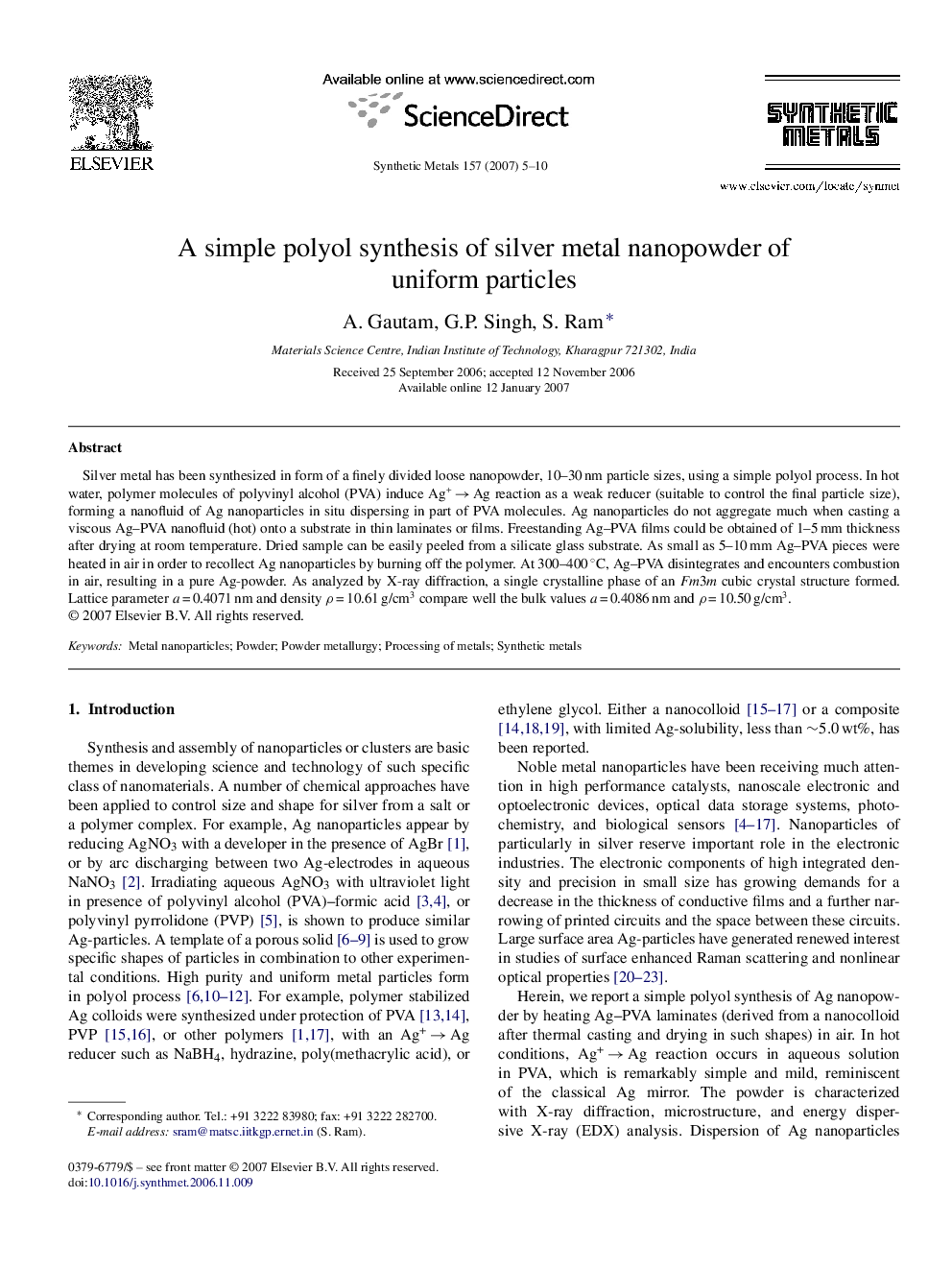| Article ID | Journal | Published Year | Pages | File Type |
|---|---|---|---|---|
| 1443530 | Synthetic Metals | 2007 | 6 Pages |
Silver metal has been synthesized in form of a finely divided loose nanopowder, 10–30 nm particle sizes, using a simple polyol process. In hot water, polymer molecules of polyvinyl alcohol (PVA) induce Ag+ → Ag reaction as a weak reducer (suitable to control the final particle size), forming a nanofluid of Ag nanoparticles in situ dispersing in part of PVA molecules. Ag nanoparticles do not aggregate much when casting a viscous Ag–PVA nanofluid (hot) onto a substrate in thin laminates or films. Freestanding Ag–PVA films could be obtained of 1–5 mm thickness after drying at room temperature. Dried sample can be easily peeled from a silicate glass substrate. As small as 5–10 mm Ag–PVA pieces were heated in air in order to recollect Ag nanoparticles by burning off the polymer. At 300–400 °C, Ag–PVA disintegrates and encounters combustion in air, resulting in a pure Ag-powder. As analyzed by X-ray diffraction, a single crystalline phase of an Fm3m cubic crystal structure formed. Lattice parameter a = 0.4071 nm and density ρ = 10.61 g/cm3 compare well the bulk values a = 0.4086 nm and ρ = 10.50 g/cm3.
